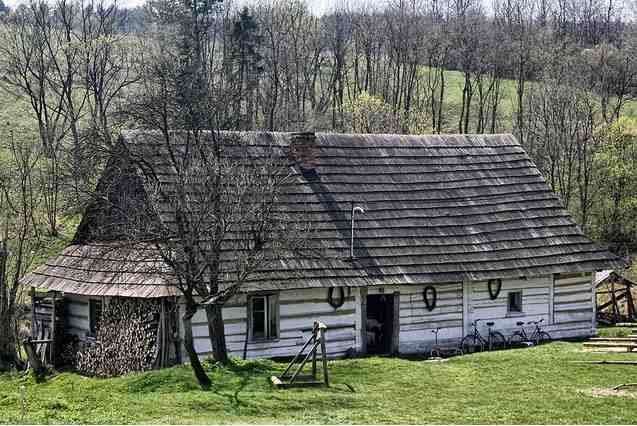The Beskid Niski
Before I write about the Beskid Niski, I'd just like to say hello to all of the readers of the blog. When I first started writing these entries, I did so mainly because I wanted my cousins Bern, Bob and his wife Mary to have some information about Poland and Krakow before our upcoming trip. Also, I wanted to share this experience with other family members and friends. Six weeks in, I now see that we have many other readers as well. In fact, they come from ten different countries, with the most prominent reader of the whole blog being from Poland's wonderful neighbor, the Czech Republic. By the way, I love Prague! It's quite possibly the most beautiful city I've ever seen. To all of you, I say a very hearty welcome! I'm happy that you continue to view these pages, and I encourage you to post your own comments at the bottom of the Factoids. We would all love to hear from you!
Okay, so today's Factoid is on the region where our family, the Ardans, originally hailed from in southeastern Poland, the Beskid Niski:
When we go to Poland, we’ll be traveling mainly in the heart of Malopolska, or the region known as “Little Poland.” The town of Polany (our grandpa's birthplace) is in a very rural part of this area, more specifically in what is called the Beskid Niski, or Lower Beskid. In fact, the name Polany is very fitting for a region like this; it translates as something like a meadow, or clearing in the forest. The Beskid is a beautiful, occasionally wild area of rolling hills and open pastures in the Carpathian Mountains. Technically, it extends across the border into neighboring Slovakia.
For, me the Beskid Niski is a place where you can still experience an old, vanishing culture. There are homes in use there that, in other areas, might only be found in an ethnographic museum. It’s truly in the the Lemko heartland and, although the Lemko culture was severely uprooted after WWII in a forced resettlement program called Akcja Wisla, many Lemkos have now returned to their home region. There is a growing and viable Lemko culture there once again, though admittedly nowhere near its prewar proportions. To see Lemkovina in a day or so is not possible, however, to miss it would be to miss an amazing touchstone with our family history. This is where Stefan Ardan worked, played, hunted, fished. For me, every time I go to the Beskid, the trip is not only fun, but it also has a serious, almost sacred nature to it. I’m so happy that you will get to see pani Buriak, our grandfather’s church, the stream where he would have played and fished, and so much more. Really, we could spend our whole time in this area. Like everything in Poland, it certainly is changing, and tourism is more and more frequently creeping into even tiny places like Polany. However, the town, as well as the greater Beskid region, still somehow holds on to a vibe that I am sure you will love from the first time we walk or drive along a side road or path near Polany.

Although it’s getting more difficult to see these types of houses in Poland, the Beskid Niski still has a quite a few.
Tags:
Topic: The Beskid Niski
No comments found.
